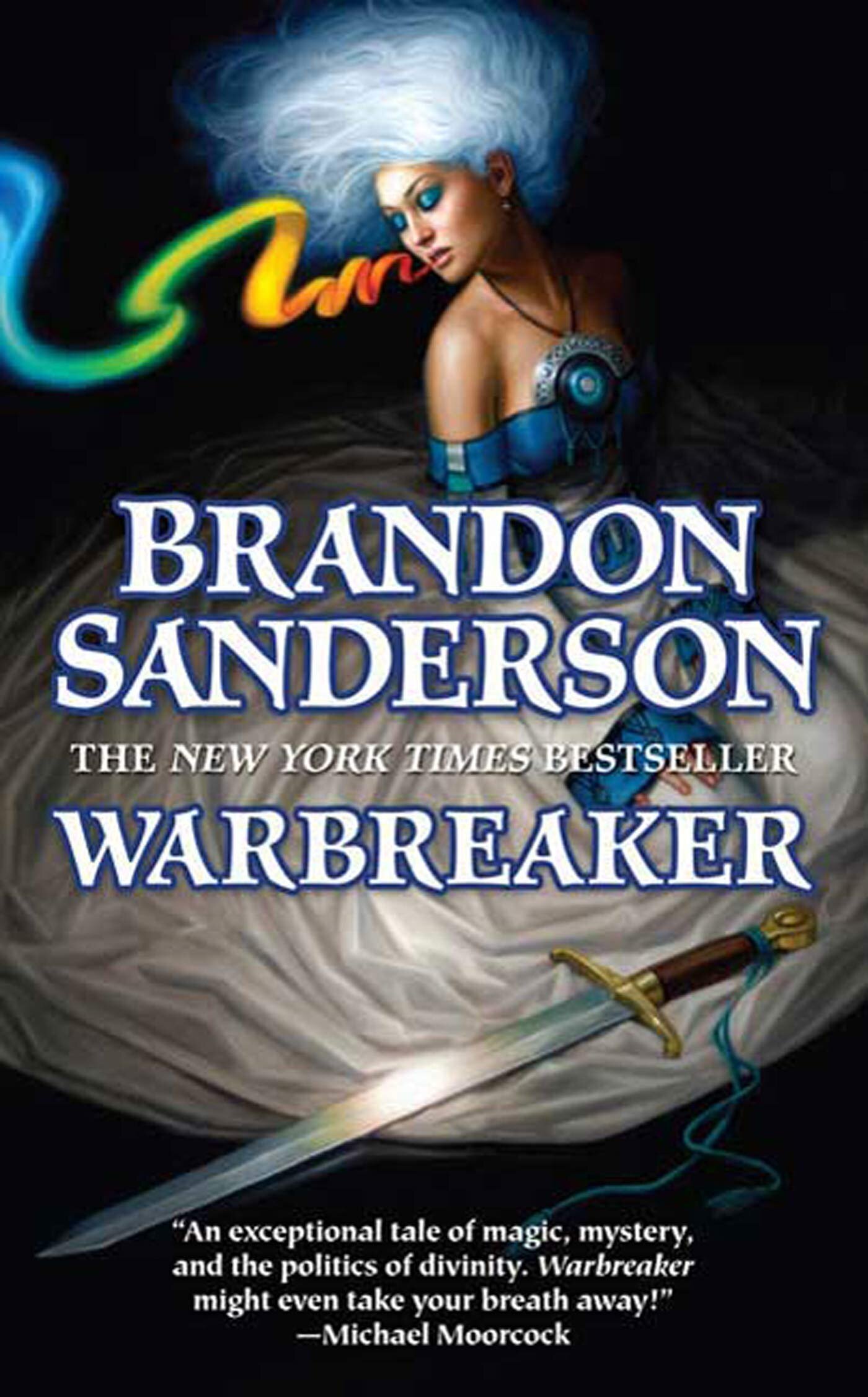Book Review: Warbreaker
This is the last full book in my big Sanderson catchup read! (I came to Sanderson late). After knocking out the Mistborn Era 2 books (not reviewed here, because hiatus), I finally bought Warbreaker.
Afraid of an impending war, the Idrian king has betrothed his daughter to the Hallandren god-king. Vivenna has grown up knowing she’d be sent to the Hallandren court, a sacrifice of sorts. But when the day comes, her father sends her youngest sister, Siri, instead, unwilling to part with his favorite daughter. Suddenly thrown in over her head, Siri must navigate the Hallandren court of Returned gods and her new marriage to ensure her safety and the safety of her people — and everything is not as it seems. Meanwhile, Vivenna sets out on an ill-advised mission to rescue her sister, a task that promises to break her if she doesn’t learn how to bend.
Ah, where to begin.
Well, like most Sanderson books, Warbreaker is compulsively readable. The man plots like a machine, setting up every domino, leading you from one chapter to the next, and before you know it the entire book is gone. Warbreaker is pretty long, but I read it all in about two days without really trying.
The basic conflict is between geopolitical, between two nations with shared roots and a territory dispute. The Idrians are afraid the Returned Hallandren gods and their (more or less) undead armies will obliterate them, and the Hallandren don’t seem to especially want a war but they DO want a god with the royal locks (hair that changes color due to emotion/will) back on the throne. Ergo, the marriage contract.
Everything branches out from here, as Siri discovers some surprising truths about the Hallandren court and Vivenna’s attempted rescue goes horribly awry. There’s a couple refreshing twists in there, even, including one that caught me off-guard. I’m always happy when a book manages that.
The characters are pretty refreshing as well. Siri and Vivenna are two of the book’s three main POVs and focus, and they are perfect foils for each other. Siri is young, reckless, open, friendly, a bit naive but accepting of change; Vivenna is responsible, stable, a little standoffish, but more world-wise. Sanderson wisely drops both into situations that force them to grow and pick up some of the other sister’s traits. As queen, Siri has to take on responsibility and shed her naivete, while Vivenna has to learn the importance of taking risks and that not everything can be so easily controlled. It’s a compelling journey for both of them.
The third main POV is Lightsong, a Returned god in the Hallandren court. The Returned are people who have been sent back from the dead; the Hallandren believe they come back for a purpose and worship them as divine. Lightsong is the reader’s window into the politics that flow between Hallandren’s deities, and he also covers some of the mystery components of the plot. His journey is from one of indolence to one of purpose, of recognizing why he came Returned and what he came to do. It’s a beautiful moment, when we reach it.
The fourth POV, which is substantially less than the other three, is Vasher, the mysterious man who arrives in Hallandren with some mysterious purpose and starts gathering Breaths. Vivenna encounters him several times and hears rumors of him before actually learning more of who he is, and the reveal of that backstory is FASCINATING. He has much less of an obvious personal arc, although there is definitely a lot of atonement in his actions. (Fans of Sanderson will know that he somehow ends up on a different world later so presumably he’s still atoning…)
The rest of the supporting cast are doing just enough to make the book enjoyable. Denth and Tonk Fah are delightful and interesting every time they’re on the page, and the Hallandren Godking, after being hyped up as this horrible being, turns out to be quite adorable. The other gods are devious and annoying by turns. With it all combined, the cast is one of the book’s greatest strengths.
And as always, Sanderson’s magic systems never disappoint. This one is all about color and breath, and it’s got some interesting mechanics. Basically, everyone has one Breath, but if you can accumulate more, then you gain certain powers, like improved perception and perfect pitch, and you can use those additional Breaths to Awaken objects with an appropriate command. If you have no Breath, it doesn’t kill you, but the world is certainly a little less lively.
There are a lot of creative uses for Awakening, most of which come from Vasher, and it makes a lot of impossible things possible without being overwhelmingly powerful (a la Stormlight and surgebinding, at times). There is also some in-world speculation that one’s Breath is one’s soul, which leads to some interesting hang-ups among the Idrians.
The rest of the worldbuilding feels smaller in scope than some of Sanderson’s other world, so concerned is the book with this one conflict between two nations. There is some mention of other nations, and Sanderson also brings up the dyes produced in Hallandren that are produced nowhere else, but other than that, there’s not a whole lot about the wider world. It’s something I hope Sanderson explores in the Warbreaker sequel, whenever he gets around to writing it. The hints of a sequel’s plot are certainly there!
This one isn’t quite 5 stars for me, but it got pretty close. It’s a very fun read with lots of neat concepts to sink your teeth into, and it’s more or less a standalone adventure. Definitely a strong recommend for my fantasy fans.
Grade 4.5/5 stars
Memorable Quote:
“Denth smiled. “What I’m trying to say is that you don’t understand a man until you understand what makes him do what he does. Every man is a hero in his own story, Princess. Murderers don’t believe that they’re to blame for what they do. Thieves, they think they deserve the money they take. Dictators, they believe they have the right—for the safety of their people and the good of the nation—to do whatever they wish.”
He stared off, shaking his head. “I think even Vasher sees himself as a hero. The truth is, most people who do what you’d call ‘wrong’ do it for what they call ‘right’ reasons. Only mercenaries make any sense. We do what we’re paid to do. That’s it. Perhaps that’s why people look down on us so. We’re the only ones who don’t pretend to have higher motives.””







